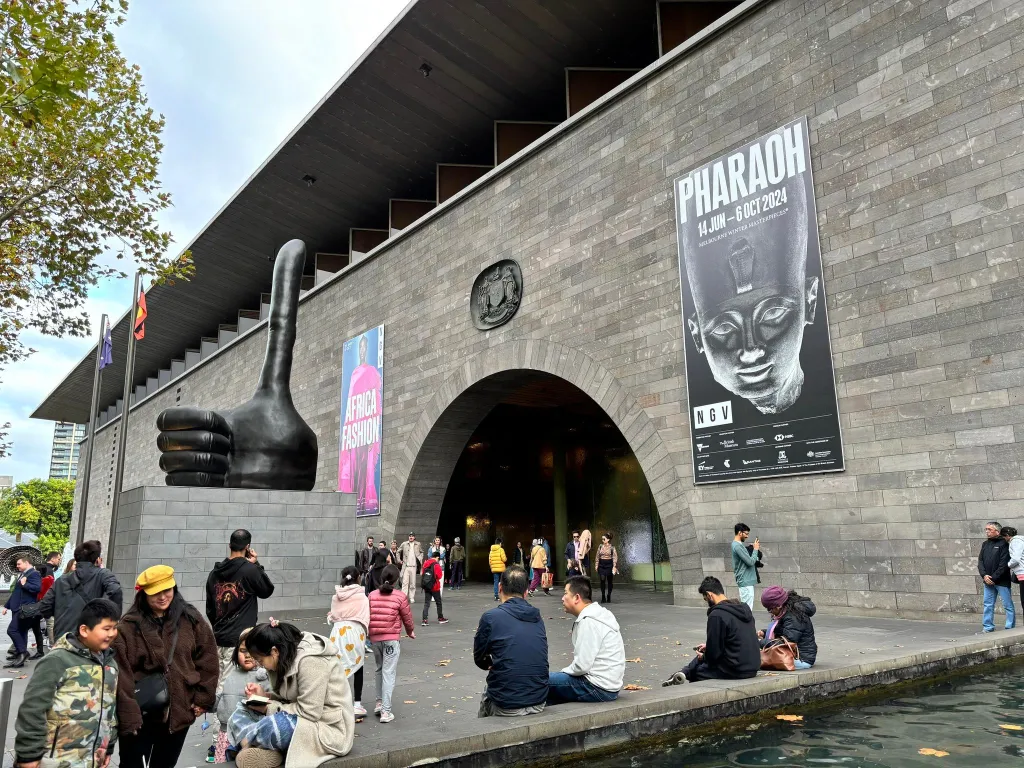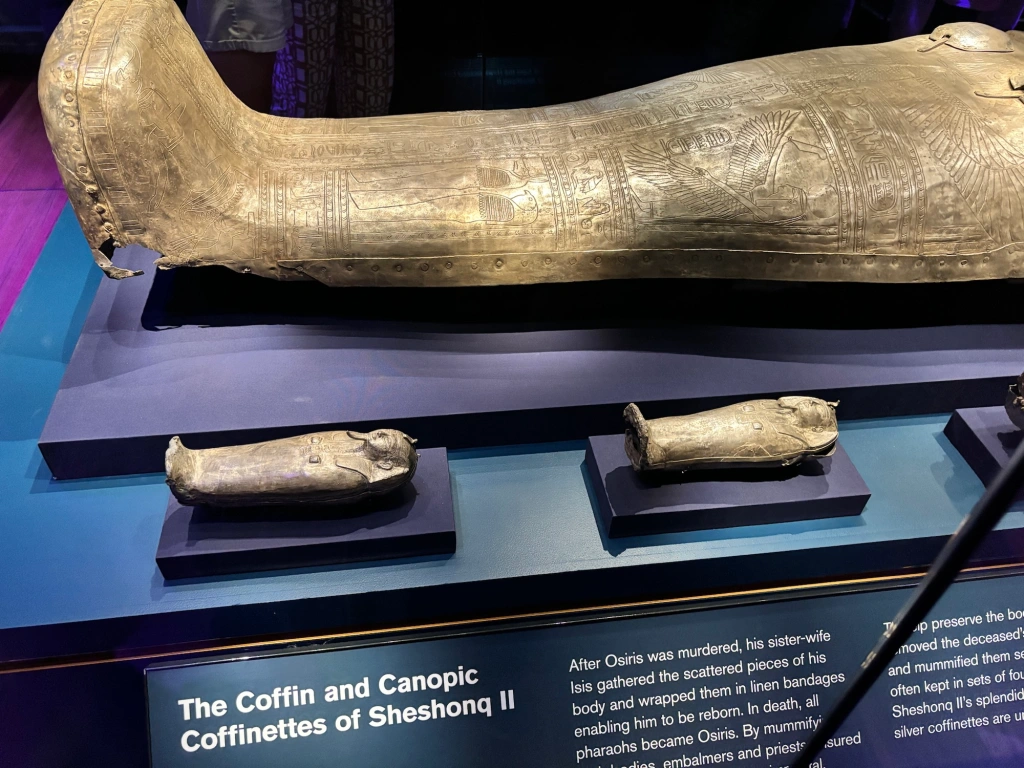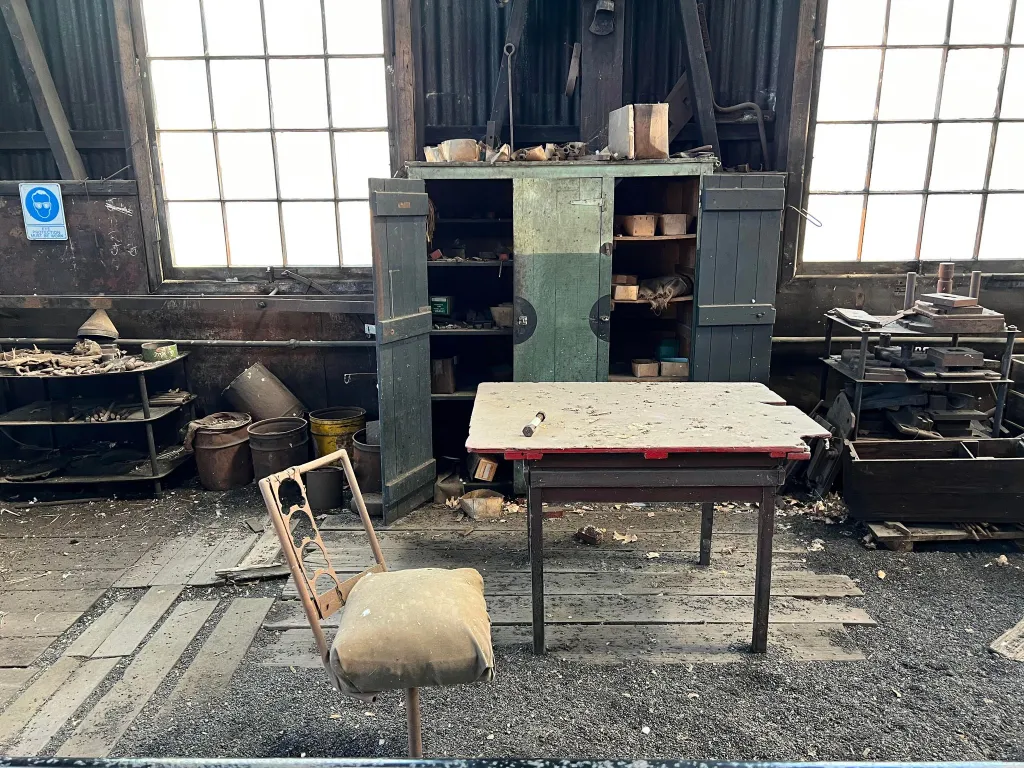Unfortunately today was this exhibition’s final day at the Queensland University of Technology Art Museum (QUT Art Museum). It will travel to Art Gallery of Ballarat in Victoria (28 March – 21 June 2020) and the Samstag Museum of Art in Adelaide (3 July – 11 September 2020). If you are near either of these galleries I strongly encourage you to go and see the exhibition and explore these enticing and thought-provoking paintings. I will share with you some of my favourite works, but first, I want to introduce you to the artist and talk a little about my first impressions of the exhibition.
About the Artist and Artworks
Anne Wallace is a Brisbane-based artist who began her studies at QUT. In the mid-1990s, Wallace was awarded a Samstag International Visual Art Scholarship to study a Master of Arts at the Slade School in London. After completing this degree, she spent some time in Paris furthering her career then returned to Brisbane where she currently resides.
Wallace paints seemingly ‘conventional’ images on first glance. However, the more you look at the images and the more time you invest in her works, you start to see a certain twist. What looked seemingly ‘normal’ starts to look a bit off, a bit strange. These artworks all resonated with me. I think mainly because there is an element of darkness and complexity to the works that I can appreciate and, to me, this captures more of reality. Her links to pop culture as well are really interesting.
First Impressions
When we (me and a lovely friend) first walked into the Museum we were greeted by very loud sounds. A public program was running in the gallery space called ‘Melodic Rhythms: Marimba for Beginners’. If you don’t know what a Marimba is, it’s a percussion instrument that you hit (simplification). It was only running for an hour, and we made the decision to not delay our visit but to cope with the noise. It is fantastic to see such public programs in the gallery space, but I would recommend checking before you visit to see what’s on in case loud noises cause discomfort.
I also remember thinking that the exhibition was huge. It spreads across all available galleries in the Museum and showcases 80 of Wallace’s works. Considering this is a free exhibition, I was so impressed with how many works from this artist could be gathered and displayed in the one exhibition. It provides visitors with a very comprehensive overview of the artist and her practice.
Finally, it was great to encounter staff who were so helpful and welcoming. As soon as we entered, a staff member came out from behind the desk to greet us, let us know about the program, and quickly explained the layout of the exhibition. Having such staff, especially at an Art Museum that can feel quite overwhelming, is so important in setting the tone and atmosphere for the visit.
Exhibition Overview and Highlights
As I mentioned before, this exhibition spans all galleries within the Museum. When you first enter the space you can choose to start your visit with the rooms on the left or the rooms on the right. The rooms on the left do have the introductory panel at the front indicating this is where you start. However, it’s not that strict and you can easily read the panel then decide where to go next.
Similar to a few other exhibitions I have reviewed, this exhibition does not have individual artwork labels but a floor plan where you can find all the information. I still believe that this works well for exhibitions showcasing artworks by one artist. You are already aware of who has created the work, so if you are looking for a title or some short explanation then you can look it up on the plan. It is also a very clear plan. Each artwork has a number that correlates to a number on the plan. This means very little scope for confusion.
One thing that works particularly well is the absence of any sub-themes or room themes. It would be fascinating to learn, from a curatorial perspective, how the exhibition was curated. I am sure there would be some guiding themes influencing how the artworks are displayed. However, this isn’t made explicit. When I am told a theme, I get into that head space and look at artworks with the theme in the back of my mind trying to work out how they fit. In the exhibition, this distraction is absent, and I was free to look at each artwork with a lot more freedom.
There are a couple of walls with no works on them that look slightly out of place, but overall there is good balance. Each larger piece has its own space and smaller artworks are grouped together in similar bundles. So many of the works need this space so visitors can take a closer look and not have their view of one work obstructed by another.
My Favourite Artworks
Selecting my favourites has proven to be a very tough choice. I wanted to go with 10 but that is slightly too many and 5 is just unfair. Instead, I’ve settled with 8 and even then struggled to narrow down my selection.
- Stain, 2000, Oil on canvas

There is definitely a sinister feel to this painting. What is she looking at? What has happened? Why could she be looking with such shock? This painting is like picking up a book and starting to read halfway through. My mind was racing with possibilities.
- Dreaming of a Song, 2005, Oil on canvas

So many paintings of Wallace make you feel as though you’re just getting a slight glimpse into someone’s life. They also make you feel like you are standing on the street looking in, perhaps in a sinister way.
- She Is, 2001, Oil on canvas

I love the aesthetics of this piece and researched a bit more into the work post-exhibition. It is a commentary on identity and how we constantly question our own identity. The figure in the artwork has just written the letter ‘I’ in her mirror with lipstick.
- Freshman, 2001, Oil on canvas

Similar to the previous artwork, the aesthetic of this piece captured my attention.
- Faith, 2007, Oil on canvas

This work makes me think of venturing into the unknown as stylishly as possible.
- Flat of the LSD Dentist, 2019, Oil on canvas

I love this work on so many levels. The light from one room draws your attention away from the darkness surrounding and you can’t help but think what is happening inside. After a bit more research, I discovered this is meant to be the flat of Dr Robert, a dentist who is believed to have introduced The Beatles to LSD.
- Talking Cure, 2010, Oil on canvas

This work is a commentary on the drive behind people’s desire to know motivations. The therapist is missing from this work leaving the female patient with the viewer. What are they trying to tell us and what are we projecting onto them?
- Exemplar, 1993, Oil on canvas

This artwork is a morality tale of femininity (phrase taken from the artwork description). The central pregnant figure is displayed as the exemplar. However, the three girls in the forefront of the image are holding books and toys rebelling against this exemplar and choosing alternate paths. They are not blindly following the ideal and what society says is expected of them, they are becoming their own individuals. Due to its message and the artwork composition, this is my favourite artwork in the entire show.
Final Thoughts
If you missed seeing this show and cannot catch it at either of the other two galleries, I hope this overview has encouraged you to delve into the world of Anne Wallace for yourself. You can see more of her works here. Keep an eye on the QUT Art Museum as they have some amazing shows. They are open on the weekend (12-4pm Saturday and Sunday as well as 10am-5pm Tuesday to Friday), have free entrance and the Museum is accessible. I’m so grateful to have seen this exhibition and learn all about yet another amazing female Brisbane artist.








Leave a comment